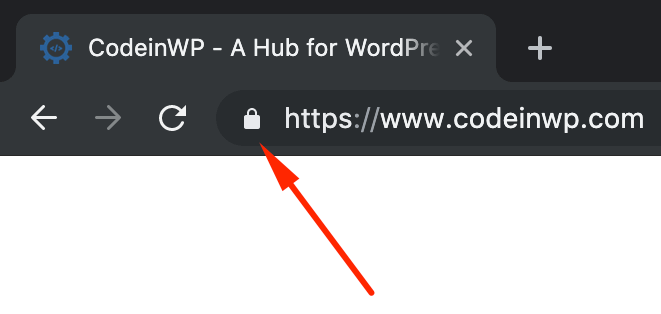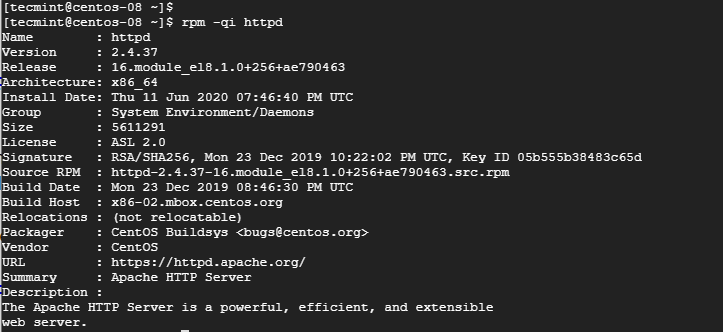
A web server refers to a device providing services to another device. These services allow programs and devices to connect. For example, a person who wants to watch Netflix shows on their computer will run an app that connects to a network of Netflix servers. Once the app has connected, it will begin a local stream and use Netflix.
HTTP
Web servers are software programs designed to provide web users with services. The web browser sends a request to the web server, which then returns the requested document as an HTML page. The client may also be able to choose to download or open the resource in its native application. An HTTP server is also known by web servers. It is a special kind of computer that is designed to serve this purpose.

Processor
The processor is an integral part of your web server, allowing you to manage many tasks at once. It's responsible for processing all client requests. The processor of your server is an electronic circuit that receives instructions from clients and generates output. This unit may be one chip or multicore. Different tasks that require high CPU processing power can be handled by different processors. This helps spread the processing demands of multiple processes, improving performance.
Router
Routers can be used to send data between devices within a network. These devices typically include computers, scanners and printers. They connect to the Internet through a modem and routers assign them local IP addresses. This helps prevent information from being lost in transmission.
File system
A file system is a system for naming, storing and retrieving files. Operating systems use files systems to store, manage and retrieve data. File systems can also be used to manage security and access to data.
Gateway interfaces
Gateway interfaces are simple calling protocols that allow web servers to route requests from Python frameworks to web applications. These interfaces will be described by Python Enhancement Proposal 333.

Headers for messages
HTTP headers refer to the information that a web server sends before it processes a request. They contain the requested response type, length, and location. In addition, they specify whether the response should be sent in a different location, if applicable.
FAQ
What is a static website?
A static website is where all content is stored on a server and accessed by visitors via web browsers.
The term "static", refers to the absence or modification of images, video, animations, and so forth.
This site was originally intended for corporate intranets. However it has since been adopted and modified by small businesses and individuals who require simple websites without complex programming.
Static websites are becoming more popular due to their ease of maintenance. They're easier to update and maintain when compared to a fully-featured website with many different components (such as blogs).
They also tend to load faster than their dynamic counterparts. This makes them great for those who have slow Internet connections or users with mobile devices.
Additionally, static websites are safer than dynamic sites. A static website is impossible to hack. Hackers only have access the data in a database.
There are two main ways you can create a static web site.
-
Utilizing a Content Management System.
-
Create a static HTML website
Which one you choose depends on your requirements. A CMS is a good choice if you are new to website creation.
Why? It gives you full control of your website. You don't need to hire someone else to help you set it up. Upload files directly to the CMS.
You can still learn to code and make a static website. You will need to spend some time learning to program.
What Websites should I make?
This question is dependent on your goals. Your website should be able to sell products online. This will allow you to build a successful business. This can only be achieved by building a solid eCommerce website.
Blogs, portfolios, as well as forums are some other popular web types. Each one of these websites requires different skills. For instance, if you want to set up a blog, you will need to learn about blogging platforms such as WordPress or Blogger.
It is important to choose the right platform for your site. There are many templates and themes available that can be used for free on each platform.
Once you've chosen a platform, you can build your website by adding content. You can add images, videos, text, links, and other media to your pages.
You can publish your website online once you have launched it. Visitors can view your site online once it has been published.
WordPress is a CMS?
Yes. It is called a Content Management System. A CMS allows you to manage your website content from within a web browser instead of using an application such as Dreamweaver or Frontpage.
WordPress is absolutely free! You don't have to pay for anything other than hosting, which your ISP usually provides.
WordPress was originally designed to be a blogging platform. However, WordPress now offers many options including eCommerce sites and forums, membership websites, portfolios and portfolios.
WordPress is easy and quick to install. You must download the installation file from their website and upload it onto your server. You can then visit your domain name using your web browser to log in to your new website.
After installing WordPress on your computer, you'll need a username and a password. Once you have logged in, a dashboard will appear where you can view all of your settings.
From here, you can add pages, posts, images, links, menus, widgets, and plugins. If you are comfortable creating and editing content, you can skip this step.
If you prefer to work with a professional web designer, you can hire them to manage the entire process.
How Do I Choose A Domain Name?
It is important that you choose a domain name that is memorable. If your domain name is not great, people won't be able to find you easily when they search the internet for your product.
Domain names need to be short and simple to remember, relevant for your brand, and unique. You want it to be something people will type into their browser.
Here are some ways to choose a domain name.
* Use keywords related to your niche.
* Avoid using hyphens (-), numbers and symbols.
* Don't use.net or.org domains.
* Use words that are already used.
* Avoid generic terms such as "domain" and "website".
* Check to make sure it's there.
What is a UI designer?
A user interface (UI) designer creates interfaces for software products. They design the visual elements and layout of an application. They may also include graphic designers.
The UI Designer should be a problem solver who understands how people use computers and what makes them tick.
A UI designer needs to be passionate about software and technology. He/she must understand all aspects of the field, from developing ideas to implementing those ideas into code.
They should be able to create designs using various tools and techniques. They should be creative thinkers and be able to solve problems using innovative solutions.
They must be organized and detail-oriented. They should be capable of quickly and efficiently developing prototypes.
They should be comfortable working with clients, both large and small. They must be able to adapt to various situations and environments.
They should be capable of communicating effectively with others. They should be able communicate clearly and concisely.
They should be well-rounded, with strong communication skills.
They should be motivated and driven.
They should be passionate about their craft.
Is web design difficult?
Web Development is hard but you can learn it if you are passionate about coding.
Just find the right tools, and then go through each step.
YouTube and other platforms have many tutorials. You can also access free online software like Sublime Text, Notepad++, and others.
Books can also be found in libraries and bookstores. These are some of the most well-known:
O'Reilly Media presents "Head first HTML & CSS".
"Head First PHP & MySQL 5th Edition" by O'Reilly Media
Packt Publishing, "PHP Programming For Absolute Beginners",
I hope this article helps you!
Can I use a template or framework on my website?
Yes! When creating websites, many people use pre-built templates. These templates contain all the code that is required to display information.
Some of the most well-known templates are:
WordPress - One of the most used CMSes
Joomla – Another popular open-source CMS
Drupal - an enterprise-level solution that large organizations use
Expression Engine - Yahoo's proprietary CMS
You will find hundreds of templates for each platform. So it shouldn't be hard to choose the right one.
Statistics
- It's estimated that chatbots could reduce this by 30%. Gone are the days when chatbots were mere gimmicks – now, they're becoming ever more essential to customer-facing services. (websitebuilderexpert.com)
- Is your web design optimized for mobile? Over 50% of internet users browse websites using a mobile device. (wix.com)
- The average website user will read about 20% of the text on any given page, so it's crucial to entice them with an appropriate vibe. (websitebuilderexpert.com)
- When choosing your website color scheme, a general rule is to limit yourself to three shades: one primary color (60% of the mix), one secondary color (30%), and one accent color (10%). (wix.com)
- It enables you to sell your music directly on your website and keep 100% of the profits. (wix.com)
External Links
How To
How to use Drupal 7 for Web Design
Drupal is one of most well-known Content Management Systems (CMS), available today. It was created in 2003 by DriesBuijtaert from Belgium. The name derives its name from Dirk Buijtewaard's and Pierre d'Herbemont's initial letters. Drupal was made open-source in 2005. Since then, many versions have been released. Drupal is still used by many companies and websites all over the globe.
There are several reasons why Drupal is so popular among website owners. Drupal is free to download, and easy to install. It's also very easy to customize it and extend it. It is also very well documented. It provides tremendous support via IRC channels and forums. It is also extensible through modules. Sixth, it supports multiple languages. It can be easily customized. It can be scaled. It is secure. Tenth it is reliable. Finally, the community supports it. Drupal is a good choice for your next project due to all of these factors.
You might wonder what makes Drupal stand out from other CMS platforms. The answer is simple. Drupal is an open-source content administration system. Drupal is completely free and can be downloaded freely. Drupal gives you complete control of your website. You can add and remove pages, change colors, fonts and images, as well as modify videos.
If you want to create a website but lack technical skills, then you can choose Drupal. Drupal, unlike other CMS, doesn't require you to know programming to build your website. Learn how Drupal works. Then you will be able to modify your website according to your needs.
Drupal offers many plugins and themes that can be used to enhance your site's functionality. These plugins help you to enhance your site's functionality. To gather contact information from your visitors, you could use the Contact Form Module. Also, you can use Google Maps to display maps on your website. Drupal comes with many ready-made templates. These templates give your website a professional look.
Moreover, Drupal is highly flexible. Drupal is extremely flexible. You can add new modules to your site or even replace them without worrying about compatibility. If you need to integrate social media in your website, it can be done quickly. You can also setup RSS feeds or e mail subscriptions.
Drupal is customizable. Drupal offers many options for customization, including the ability to create custom fields or forms and manage users. Drupal allows you to create complex layouts.
Drupal is reliable and robust. Drupal is both stable and scalable. It offers outstanding security features. Drupal is a great web development platform.